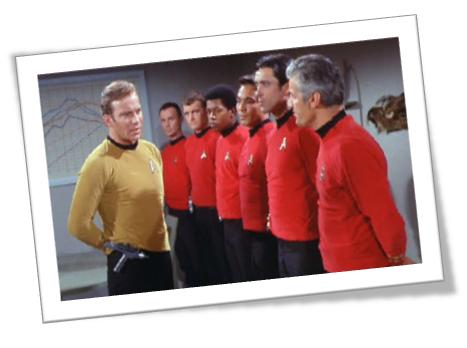A lot has changed in the broadcast mindset in just the past couple years. I derive a sense of pride when I see so many broadcasters focusing on digital, buying mobile apps, setting up texting platforms, and promoting their streams.
 When we wrapped up the “Goin’ Mobile” study for Arbitron a couple of years ago, we were in the process of putting together a leave-behind for the NAB Radio Show “Super Session” where it was first presented.
When we wrapped up the “Goin’ Mobile” study for Arbitron a couple of years ago, we were in the process of putting together a leave-behind for the NAB Radio Show “Super Session” where it was first presented.
Aside from a series of key takeaways, the conclusion that we reached, with the guidance of Dr. Ed Cohen and Bill Rose, was that we would consider ourselves successful if mobile became a part of every radio company’s digital agenda moving forward.
Happily, we are now at that point. Between iHeartRadio, Radio.com, TuneIn, and the hundreds and thousands of individually branded station apps, radio has made mobile a priority. Similarly, thanks to NPR, the Public Radio Player, and other initiatives, mobile is a key element in the world of public radio, too.
So what’s the problem?
Few programmers, brand managers, and other radio professionals take these digital avenues seriously enough. At its root, radio is still a transmitters and towers business. It’s been that way since Marconi, and because the vast, vast majority of consumers still listen on standard radios, that mindset is like concrete.
And yet broadcast radio’s digital competition is speeding down a different path – Internet streams, apps, and social media outlets are the new norm. It’s all they have so they pay 100% of their attention to their outlets.
As consumers are increasingly finding their entertainment and information in non-terrestrial spaces, keeping an eye on “secondary channels” has to become a primary focus for traditional radio operations.
The question is whether radio’s brand managers are paying enough attention to these conduits, avenues, and paths that provide content.
Last week, I noticed an update alert for a radio app on my iPhone. When I downloaded it and fired up the new version of their app, I saw a banner ad literally blocking the logo. And then I wondered how long it might take for anyone at the station to notice the mistake and report it to their app developer.
Similarly, our jacAPPS staff receives alerts from consumers who experience a stream outage when they use our apps. Oftentimes, we are the first ones to alert the station that their stream is down.
That tells me that in many operations, no one’s minding the store, because these avenues are thought to be side streets – tertiary to the terrestrial delivery system that emanates from the transmitter and tower.
 When a station goes off the air, it’s like a DEFCON 1 alert inside most stations. The engineers run around, programmers pull their hair out, sale starts calculating the number of missed spots (and corresponding dollars), and there’s an intense sense of frustration among every department head until the station comes back on the air.
When a station goes off the air, it’s like a DEFCON 1 alert inside most stations. The engineers run around, programmers pull their hair out, sale starts calculating the number of missed spots (and corresponding dollars), and there’s an intense sense of frustration among every department head until the station comes back on the air.
When the stream goes down, it’s like the tree that falls in the empty forest. It may not make a sound. Similarly, how often do odd occurrences go unnoticed on Facebook pages or Twitter accounts because no one’s paying attention?
How closely is radio monitoring its streams for quality and content? Who’s responsible for keeping a close watch on social media pages? Who’s regularly checking the mobile app to be sure its stream and features are working properly?
At our digital strategy sessions, Lori Lewis is adamant about the need for “captains” – responsible parties inside the station assigned to each and every digital content channel. The program director typically doesn’t have the time, the training, or the bandwidth to adequately monitor them all.
Radio needs to do more than just cover its bases. Succeeding in new digital arenas requires more than just checking off a “We’re there” list for mobile, streaming, and other channels. Each space requires its own learning, understanding, and monitoring – not to mention a high quality customer experience.
So who’s minding the store?
- Media And Technology In 2025: Believe It Or Not! - April 18, 2025
- In Radio, You Just Never Know - April 17, 2025
- The Secret To Making A Great Podcast (And Great Radio) - April 16, 2025




Fred: Great piece. I listen to a lot of streaming radio; and as a (former?) program director, terrestrial stations that stream their on-air signal are the most frustrating to listen to; especially around spot breaks and the substitute content that’s inserted in the stream. From mis-matched levels to repetitious ad-council PSAs – or worse yet, “buyer-beware” per-inquiry commercials (for six minutes!)
IMHO, there’s few stations that present a quality listener experience on the web.
All you have to do is pay some attention….or as you suggest, assign someone to do so. Using brilliant minds in programming, production, IT and engineering, presenting a product on the web is possible.
Thanks, Dan. These “secondary channels” have to become bigger priorities at stations – truly, a mindset change at most. But if PDs just monitored their streams (like many consultants do), they’d find the consumer experieince is abysmal. Thakns for taking the time to comment.